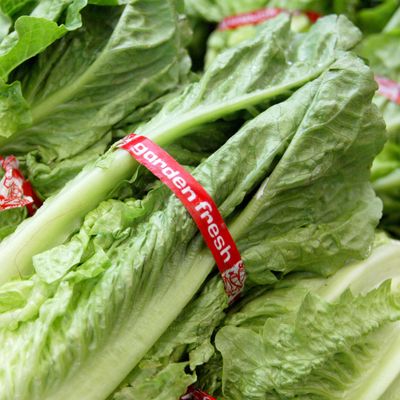
After a significant E. coli outbreak at the end of 2018, romaine lettuce is at it again, infecting 67 people across 19 states, according to the CDC. The contaminated lettuce was harvested from a growing region in Salinas, California, one of the two main growing regions in the country.
For the time being, the CDC warns consumers to avoid and/or throw out lettuce labeled as having been grown in that region, including “whole heads of romaine, organic romaine, hearts of romaine, romaine in salad wraps, and packages of precut lettuce and salad mixes which contain romaine, including baby romaine, spring mix, and Caesar salad.” Romaine lettuce that isn’t labeled at all should also be avoided.
Thirty-nine of those with identified E. coli cases have been hospitalized, six of them with a type of kidney failure. This outbreak has proved even worse than last year’s, which infected 52 people, and resulted in 19 hospitalizations.
If it feels to you that romaine lettuce always has E. coli these days, and it would almost make more sense to announce when it is safe to eat, you’re not entirely paranoid: a recent New Food Economy story explores possible causes for growing contamination problems in romaine lettuce, including water-quality concerns and proximity between lettuce farms and concentrated animal-feeding operations, which are terrible-sounding places where “over 1000 animal units are confined for over 45 days a year.” Romaine is also America’s “most popular lettuce” (a dubious superlative), hard to wash, and rarely eaten cooked, which makes it a high-risk food for contamination.
People with E. coli typically start experiencing symptoms two to eight days after exposure to contaminated romaine lettuce. If you have a high fever, bloody diarrhea (or diarrhea lasting longer than three days), or severe vomiting, the CDC recommends seeing a doctor immediately.





